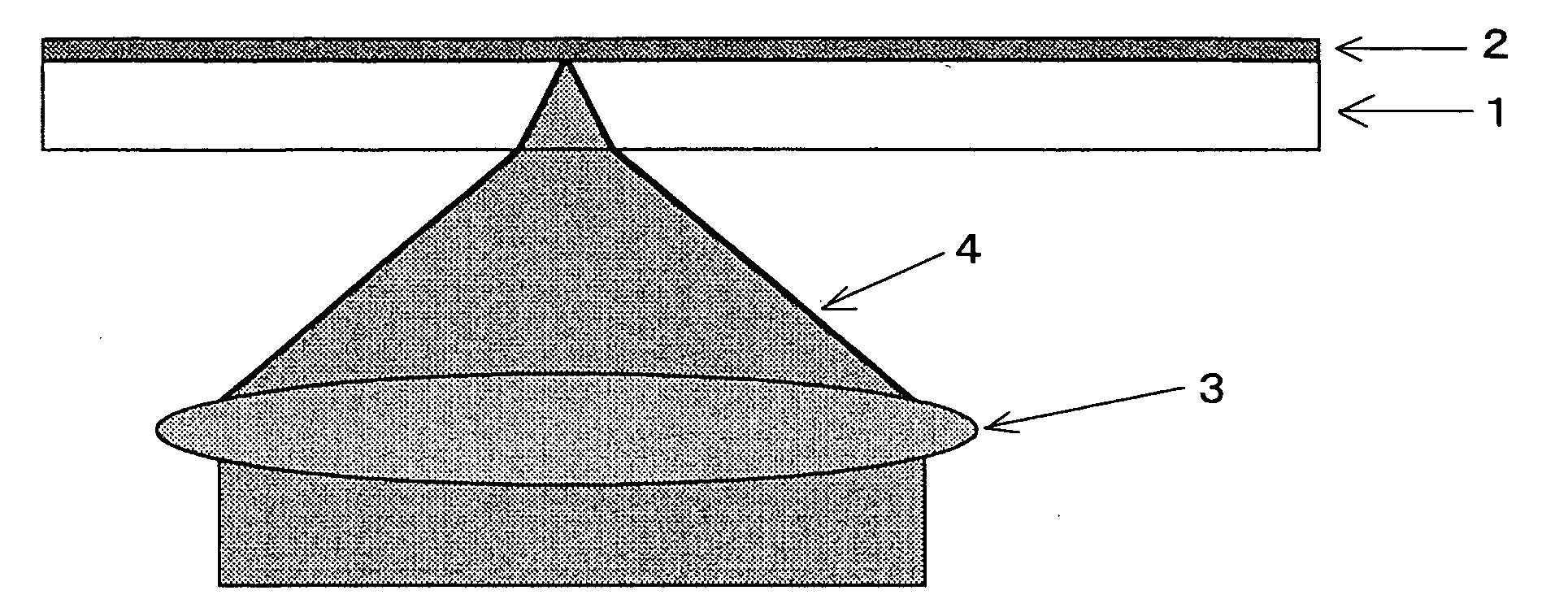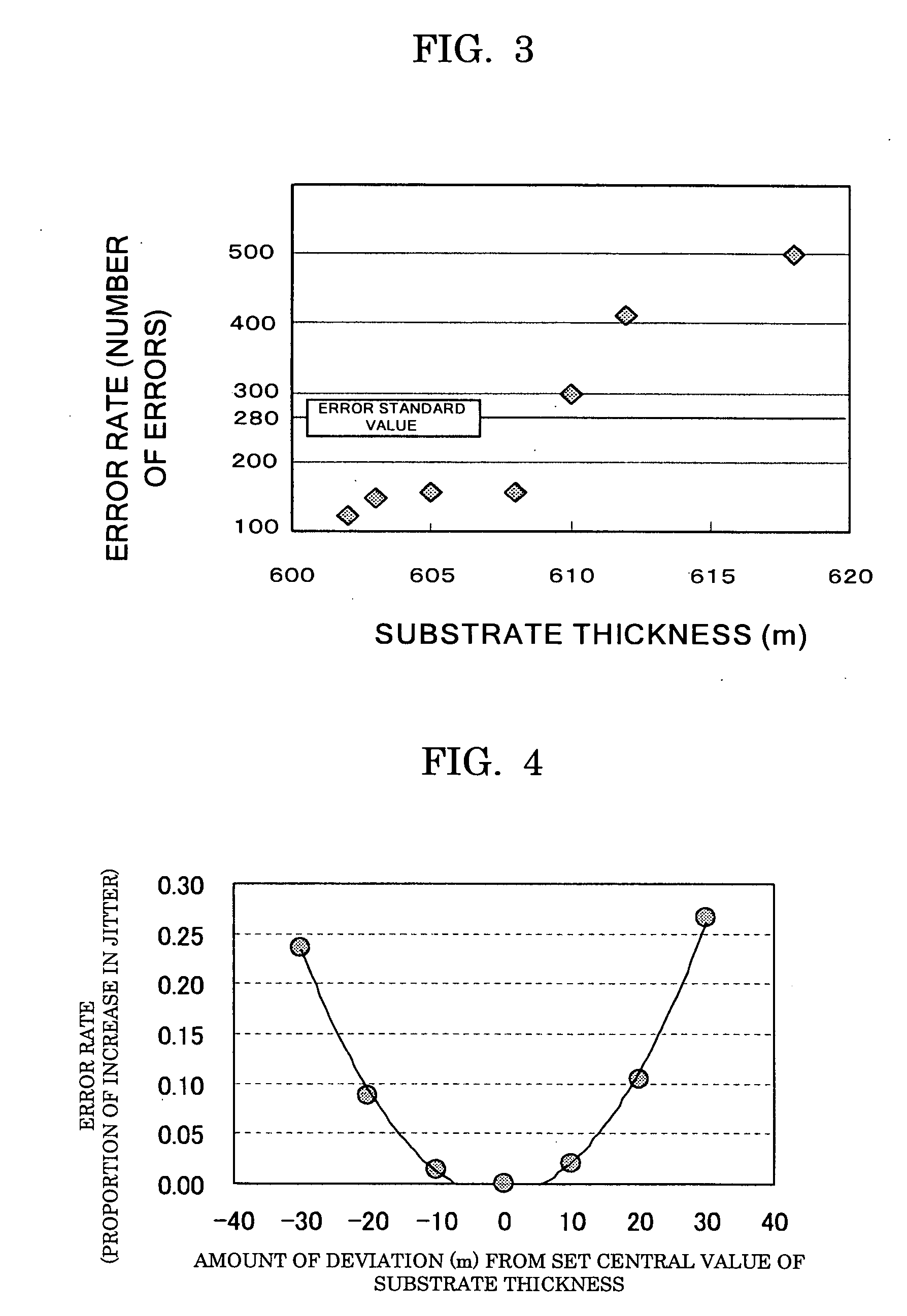Optical recording medium and method of manufacturing thereof, and recording and reproducing method
- Summary
- Abstract
- Description
- Claims
- Application Information
AI Technical Summary
Benefits of technology
Problems solved by technology
Method used
Image
Examples
example 1
Manufacturing of Optical Recording Medium
[0118] A polycarbonate resin substrate, through which light beams were transmitted and which had a set central value of a thickness of 600 μm, was manufactured by extrusion compression molding. At the time of molding the substrate, the extrusion compression molding conditions (setting so as to carry out the processes of mold opening, material injection, pressurization and compression, and substrate removal during a process time of two seconds under the condition of, for example, 130 to 200° C., by using an extrusion compression molder by which pressurization and compression of, for example, about greater than or equal to 40 t and less than or equal to 80 t was possible) were adjusted appropriately, and substrates having portions of various thicknesses as shown in Table 1 were manufactured. Note that the substrate thicknesses shown in Table 1 show the values which, among the measured values, deviated the most from the 600 μm set central valu...
example 2
[0128] An “optical recording medium A” was manufactured in the same way as in Example 1 except that a polycarbonate resin substrate, which was extrusion compression molded by a stamper whose difference in thicknesses between the inner peripheral portion and the outer peripheral portion was less than or equal to ±5 μm, was used in Example 1.
[0129] Further, an “optical recording medium B” was manufactured in the same way as in Example 1 except that a polycarbonate resin substrate, which was extrusion compression molded by using a stamper in which the thickness of the outer peripheral portion was 20 μm thicker than the thickness of the inner peripheral portion, was used in Example 1.
[0130] The substrate thicknesses of the obtained “optical recording medium A” and “optical recording medium B” were distributed as shown in FIG. 9. The substrate thicknesses of both of optical recording media A and B fell within the hatched portion shown in FIG. 6. However, when this was judged together w...
example 3
[0132] 100 of the optical recording media, in which the substrate thicknesses and the maximum axial direction accelerations were varied, were manufactured in the same way as in Example 1. As shown in FIG. 6, the relationships between the amount of deviation from the set central value of the substrate thickness and the maximum allowable value of the axial direction acceleration were determined, and the error rates were evaluated in the same way as in Example 1. Note that the values are expressed by average values.
[0133] The results thereof were that, among the optical recording media falling within the hatched portion of FIG. 6, no media whose error rate at the time of high speed recording was greater than the standard value of a DVD were found, whereas media whose error rates were poor were included in a proportion of about 65% among the optical recording media falling outside of the hatched portion of FIG. 6.
[0134] Accordingly, it was confirmed that it was possible to use whether...
PUM
 Login to View More
Login to View More Abstract
Description
Claims
Application Information
 Login to View More
Login to View More - R&D
- Intellectual Property
- Life Sciences
- Materials
- Tech Scout
- Unparalleled Data Quality
- Higher Quality Content
- 60% Fewer Hallucinations
Browse by: Latest US Patents, China's latest patents, Technical Efficacy Thesaurus, Application Domain, Technology Topic, Popular Technical Reports.
© 2025 PatSnap. All rights reserved.Legal|Privacy policy|Modern Slavery Act Transparency Statement|Sitemap|About US| Contact US: help@patsnap.com



